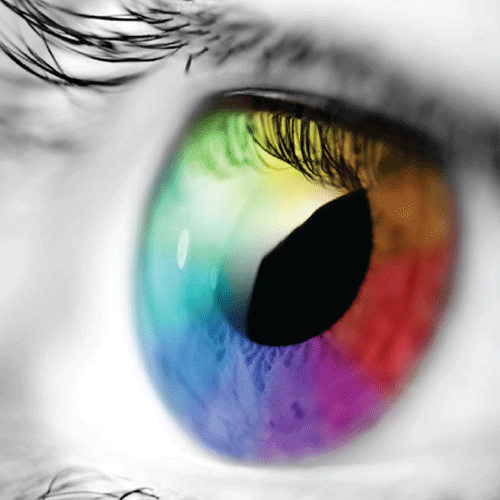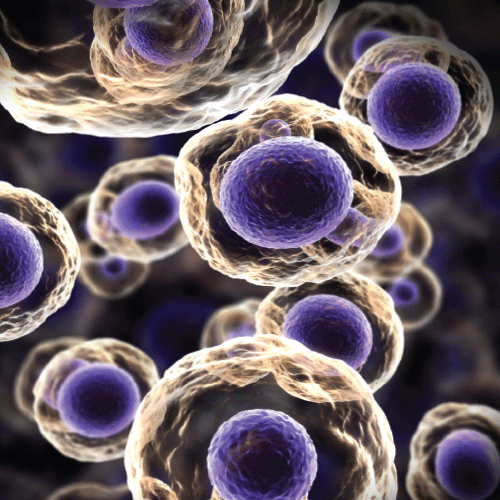Genetics of Eye Color
In 1907, Charles and Gertrude Davenport developed a model for the genetics of eye color. They suggested that brown eye color is dominant over blue eye color. This would mean that two blue-eyed parents would always produce blue-eyed children but never ones with brown eyes. For most of the past 100 years, this version of eye color genetics has been taught in classrooms around the world. It is one of the few genetic concepts that adults often recall from their high school or college biology classes. Unfortunately, this model is overly simplistic and incorrect – eye color is actually controlled by several genes.
 In humans, eye color depends on the level of a pigment called melanin present in the iris. Melanin is produced and stored inside specialized cells known as melanocytes. Blue eyes contain minimal amounts of melanin. Irises from green–hazel eyes show moderate pigment levels, while brown eyes are the result of high melanin concentrations.
In humans, eye color depends on the level of a pigment called melanin present in the iris. Melanin is produced and stored inside specialized cells known as melanocytes. Blue eyes contain minimal amounts of melanin. Irises from green–hazel eyes show moderate pigment levels, while brown eyes are the result of high melanin concentrations.
To date, eight genes that impact eye color have been identified. The OCA2 gene, located on chromosome 15, appears to play the major role in controlling the brown/blue color spectrum. OCA2 produces a protein called P-protein that is involved in the formation and processing of melanin. OCA2 alleles (versions of the gene) related to eye color alter P-protein levels by controlling the amount of OCA2 RNA that is generated. The allele that results in high levels of P-protein is linked to brown eyes. Another allele, associated with blue eye color, dramatically reduces the P-protein concentration.
While studies suggest that about three-fourths of the eye color variation can be explained by genetic changes in and around OCA2, it is not the only genetic influence on color. A recent study that compared eye color to OCA2 status showed that only 62% of individuals with two copies of the blue eyed OCA2 allele actually had blue eyes. Blue eye color was also found among 7.5% of the individuals with the brown-eyed OCA2 alleles. A number of other genes (such as TYRP1, ASIP and SLC45A2) also function in the melanin pathway and shift the total amount of melanin present in the iris. The combined efforts of these genes may boost melanin levels to produce hazel or brown eyes or reduce total melanin resulting in blue eyes. This explains how two parents with blue eyes can have green or brown eyed children (an impossible situation under the Davenport single gene model). The combination of color alleles received by the child resulted in a greater amount of melanin than either parent individually possessed.


